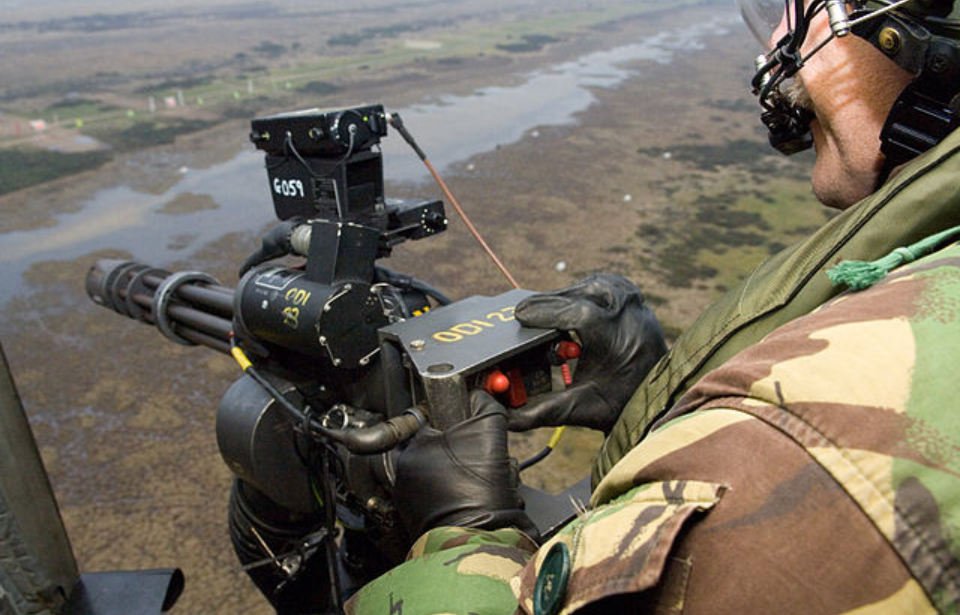With an impressive legacy of roughly 60 years of service, the M134 Minigun was created in 1960 for use by the US military in Vietnam. It has a rather interesting history, and its design is based on an unexpected (and much older) gun. This is how it helped helicopter crews fighting in the Vietnam War.
The Gatling gun was the M134 Minigun’s predecessor
While the M134 Minigun wasn’t developed until the Vietnam War, it was based off the hand-cranked Gatling gun developed in the 1860s by Richard Jordan Gatling. The gun featured six barrels, which revolved around a central shaft and turned when the crank was rotated. This rotation allowed for the weapon to have a high rate of fire, as well as kept the barrels of the gun cool.
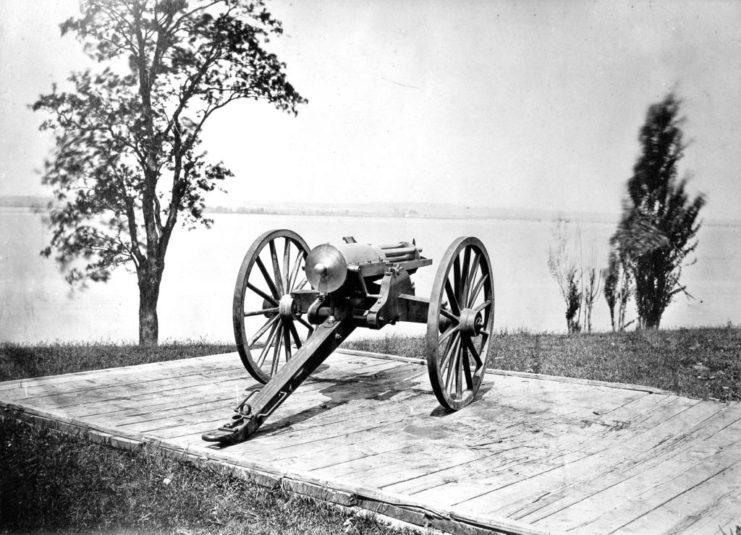
The Gatling gun most famously saw action during the American Civil War, where it was used for the first time by the Union Army. It was the inspiration for the M61 Vulcan, which kept the same six-barrel design, but rather than having the rotation of the cylinders powered by a hand crank, it was electrically powered.
Development of the M134 Minigun
General Electric modified the design of the M61 Vulcan to create the M134 Minigun. There was a need for helicopters flying over Vietnam to have a better way of defending themselves against small arms fire and rocket-propelled grenades. Choppers played a vital role in the conflict, as they allowed for swift vertical takeoffs and landings, which traditional aircraft couldn’t accomplish.
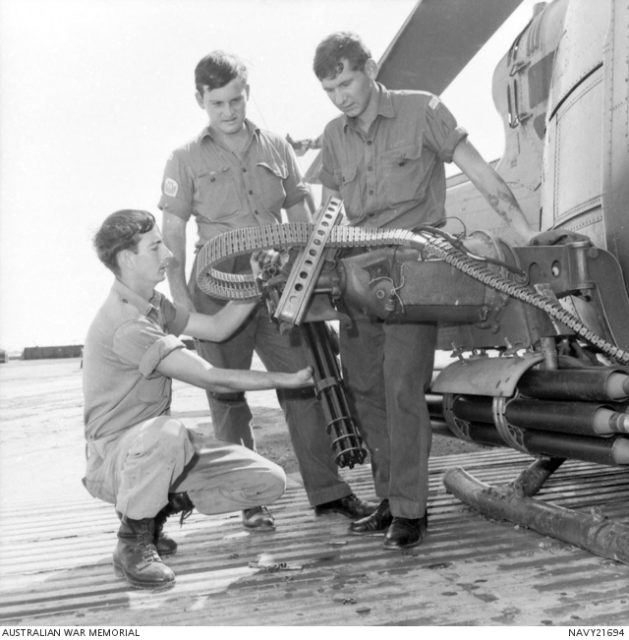
The helicopters were used to deliver supplies, artillery, ammunitions and troops, and also evacuated injured soldiers. They frequently came under attack when coming in to land, forcing their crews to use single barrel guns to defend themselves. However, they proved to be ineffective, as the jungle caused them to jam or overheat. This prompted the US to look for a solution.
Designing an effective gun for use by helicopter crews
General Electric scaled down the M61 and changed the barrels to fit the 7.62 mm x 57 mm NATO cartridge to create the M134 Minigun. It could fire 6,000 rounds per minute without overheating, thanks to its multi-barrel design.
While the gun certainly wasn’t mini, it earned the “Minigun” name from being a smaller version of the M61.
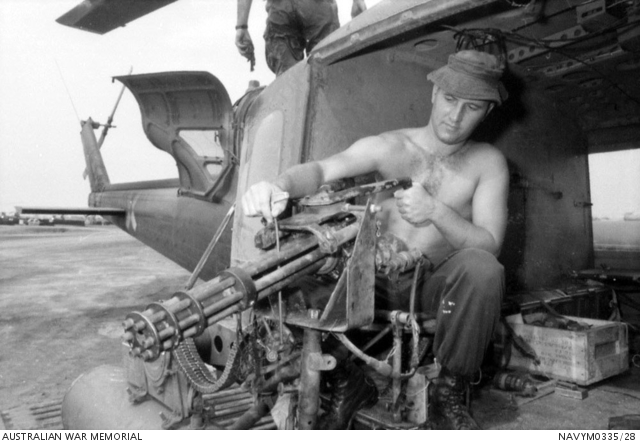
The M134 was designed to be mounted to either an aircraft, helicopter doorway or, occasionally, a vehicle. It also requires an external power source. When one of the barrels is firing a round, three others are being loaded and the remaining two are extracting shells. As the barrels rotate, the shots are fired from roughly the same position.
Use of the M134 Minigun during the Vietnam War
Once the M134 Minigun was put into action in Vietnam, it was quickly installed on US helicopters. It was mounted on the side pods of the Hughes OH-6 Cayuse and Bell OH-58 Kiowa. On the Bell AH-1 Cobra, it was installed on the pylon pods and turret, and to the door, pylon and pod mounts of the Bell UH-1 Iroquois.
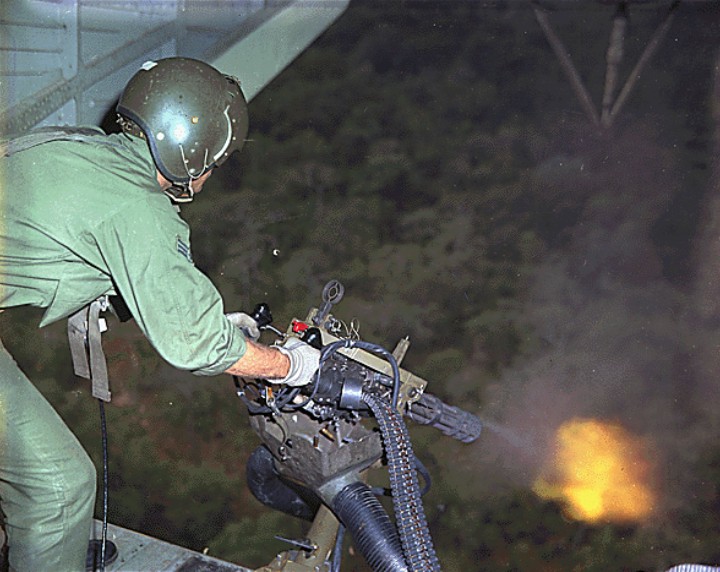
Throughout the course of the Vietnam War, the US government purchased roughly 10,000 M134s. It was effective at what it was designed to do, but wasn’t without its faults. When DillonAero purchased a large number of used M134s following the war, they frequently failed to shoot continuously.
The company fixed them, creating a better version of the gun in the process, which they certified the M134D.
Modern uses of the M134 Miningun
The original M134 Minigun is still used to this day by different branches of the US military. The US Army continues to call it the M134, while the Air Force and Navy refer to it as the GAU-2A when its fixed mounted and the GAU-17/A with a flexible mount. The gun is also allegedly used by the US president’s Secret Service team, although they won’t publicly confirm this.
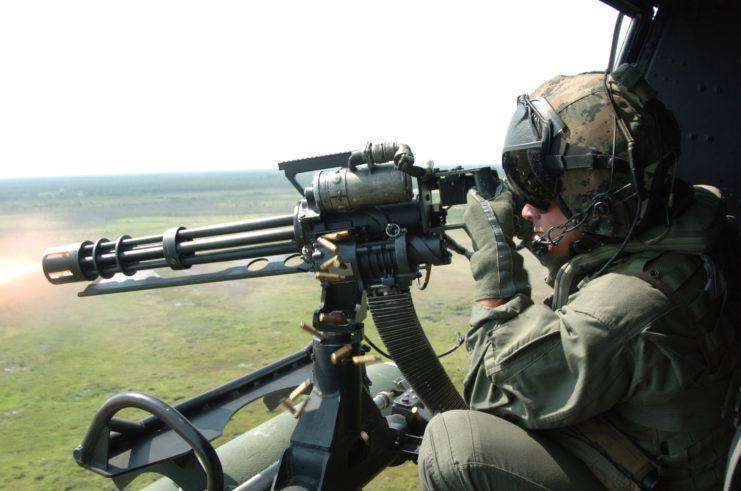
More from us: Glock 19: One of America’s Most Popular Firearms
Among the convoy of vehicles that travel with the president is at least one containing weapons, which many believe to be the DillonAero Convoy Escort Vehicle. This SUV contains an M134D Minigun mounted and ready for use out of a portion of the roof that lifts.
